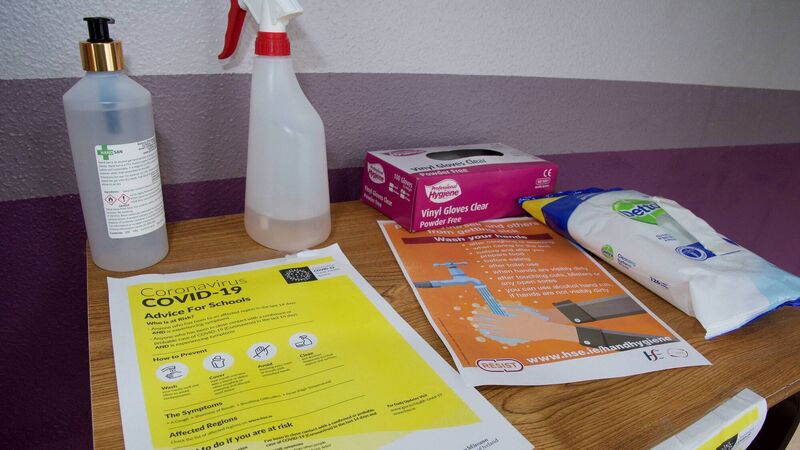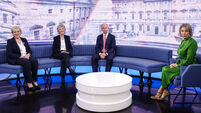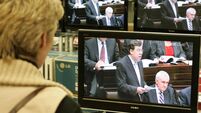Jess Casey: Closing schools or keeping them open – the Government faces a difficult choice

Some of the safety equipment used to keep teachers and students safe in schools. File Picture: Alison Laredo
With so much importance placed on in-person learning, it seems unfathomable that Government missed the only opportunity to get the virus under control while keeping schools open. Now, we are facing at least three weeks of remote learning after repeatedly hearing schools are safe. How did we get here?
In terms of public service, the National Public Health Emergency Team (Nphet) has three core objectives: to prioritise in-person learning for primary and secondary students; childcare; and non-essential healthcare while protecting public health. These are the fundamental essential services we should be proud to protect as a society. It is obscene that some cities, like New York, for example, put inside dining ahead of schools.
Operating in-class learning here was based around the necessity of keeping cases of the virus low in the community. International evidence backs this up. The most recent technical report from the European Centre for Disease Control (ECDC) reiterates that the incidence of Covid-19 in schools appears to be impacted by levels of community transmission.
In theory, this is partly achieved by everyone keeping their contacts low. It seems like a bit of a missed trick now that we didn’t have a media campaign based around this message running over the last six months because there would have no doubt been a lot of buy-in from the public.
It goes without saying that the Government staked its credibility on getting children back in their classrooms, with in-person learning operating under its level 5 plan.
At the beginning of October, Nphet warned “proactive and robust” measures needed to be taken to suppress the R number – the number of people each confirmed Covid-19 case passes the virus on to – to 1, via strict level 5 restrictions for four weeks.
“A graduated approach would not have sufficient or timely impact on the trajectory or scale of the disease, or protect the core priorities, ie school, childcare, non-essential healthcare," it said.
This advice was later rejected and the country moved to level 3 restrictions with an emphasis on “greater enforcement, personal responsibility, and sectoral responsibility.”
On October 21, the country moved to level 5 restrictions. It certainly seems now that the acceleration of the easing of those restrictions was done far too quickly in December.
Students, teachers, and principals followed stringent safety measures, wrapped up in jackets while they kept every window in their school open, and successfully, for the most part, managed to keep the virus out of their classrooms.
As we started to see before Christmas, when the virus starts to escalate in a community, it seriously threatens schools, their students, and their families. Large outbreaks in Glanmire and Killorglin saw schools shut, while Claremorris Boys National School in Mayo was directed to keep in-classroom learning going after more than 10% of its students tested positive for the virus within a number of weeks.
Under the CDC's school decision-making indicators, Ireland's incidence rate and positivity rate mean we're at the "Highest Risk of Transmission in Schools"⬇️
— Deirdre Gilhawley (@DeeGilhawley) January 1, 2021
Pity there's no range of ways for schools to operate, dependent on level of risk#COVID19ireland https://t.co/fpQAiC6N8J pic.twitter.com/vG1C9uU44d
It’s also the opinion of those working in the sector that the repeated refrain of "schools are safe" rather than the more accurate "schools are a safer environment than other settings in the wider public but they are not risk-free" has not helped inspire confidence in the system.
The hope is that we will see a different approach to school closures, one that sees vulnerable children protected. So, too, should a different approach to reopening be considered when it comes time to do so, one that takes into account blended learning for those who can.
One thing that has been shown is that if we really are to prioritise in-person learning as a society, it comes at the cost of other personal freedoms, be it household visits, shopping, or socialising. It makes for unpopular decisions for a Government.





